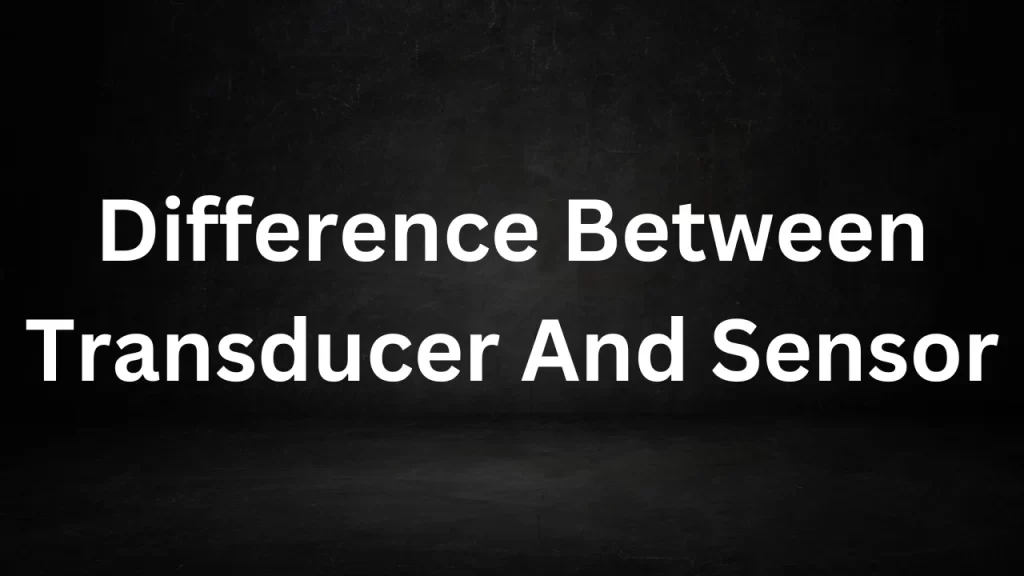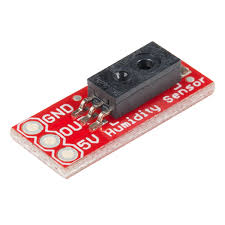Tag: differentiate between lvdt and rvdt
Difference Between Transducer And Sensor
Difference Between Transducer And Sensor: Transducers and sensors are both devices used in various fields to measure and convert physical quantities into electrical signals, but they have distinct functions and characteristics. Here’s a comparison of the key differences between transducers and sensors:

Difference Between Transducer And Sensor
1. Function:
- Transducer: A transducer is a device that converts one form of energy or physical quantity into another. It can convert various types of energy, including mechanical, electrical, thermal, or optical, into electrical signals or vice versa.
- Sensor: A sensor is a specific type of transducer that is designed to detect and respond to a particular physical stimulus, such as light, temperature, pressure, or motion. Sensors convert this stimulus into electrical signals for further processing or measurement.
2. Purpose:
- Transducer: Transducers are versatile devices used in a wide range of applications, from measuring physical quantities to converting signals for transmission or processing. They serve as intermediaries between different systems or devices.
- Sensor: Sensors are designed for specific purposes, such as detecting and measuring specific physical properties like temperature, humidity, or light. They provide data for monitoring and control systems.
3. Output:
- Transducer: Transducers can have various types of output, including voltage, current, resistance, or frequency. The output signal may not always be directly related to the measured physical quantity.
- Sensor: Sensors typically produce a well-defined electrical output signal that directly corresponds to the physical quantity they are designed to measure. For example, a temperature sensor generates an electrical signal proportional to the temperature.
4. Examples:
- Transducer: Examples of transducers include microphones (convert sound waves into electrical signals), speakers (convert electrical signals into sound waves), and strain gauges (convert mechanical strain into changes in electrical resistance).
- Sensor: Examples of sensors include temperature sensors (thermocouples or thermistors), light sensors (photodetectors), motion sensors (infrared motion detectors), and pressure sensors (piezoelectric sensors).
5. Sensing Element:
- Transducer: Transducers may or may not have a specific sensing element. Some transducers, like microphones and speakers, consist of multiple components and processes.
- Sensor: Sensors always include a dedicated sensing element that directly interacts with the physical stimulus to generate an electrical signal. For example, a temperature sensor uses a thermocouple as its sensing element.
6. Range of Application:
- Transducer: Transducers can have broad applications in various fields, including telecommunications, automation, audio technology, and instrumentation, where their primary function is to convert one form of energy into another.
- Sensor: Sensors are specialized for specific applications and are commonly used in areas such as environmental monitoring, industrial control systems, healthcare, and consumer electronics, where precise measurements of physical quantities are essential.


In summary, while both transducers and sensors play crucial roles in converting physical quantities into electrical signals, transducers are versatile devices used for various conversions, while sensors are specialized devices designed for specific measurements and applications.
Read More
- Difference Between Alternator And Generator
- Physical & chemical properties of water
- Difference Between Fuse And Circuit Breaker
- Difference Between Electromagnet And Permanent Magnet
- Blind Visually Impaired Optical Low Vision Aids
Frequently Asked Questions (FAQs) Difference Between Transducer And Sensor
1. What is a transducer?
A transducer is a device that converts one form of energy or physical quantity into another. It can convert various types of energy, including mechanical, electrical, thermal, or optical, into electrical signals or vice versa.
2. What is a sensor?
A sensor is a specific type of transducer designed to detect and respond to a particular physical stimulus, such as light, temperature, pressure, or motion. Sensors convert this stimulus into electrical signals for measurement or further processing.
3. How do transducers and sensors differ in their functions?
Transducers have a broader function, serving as intermediaries between different energy forms, while sensors are specialized for detecting and measuring specific physical properties.
4. What types of output signals do transducers and sensors produce?
Transducers can have various types of output signals, including voltage, current, resistance, or frequency, which may not always directly relate to the measured physical quantity. Sensors produce well-defined electrical output signals directly proportional to the measured property.
5. Can you provide examples of transducers and sensors?
Examples of transducers include microphones (converting sound waves into electrical signals), speakers (converting electrical signals into sound waves), and strain gauges (converting mechanical strain into changes in electrical resistance). Examples of sensors include temperature sensors (measuring temperature), light sensors (detecting light levels), and motion sensors (detecting motion or presence).